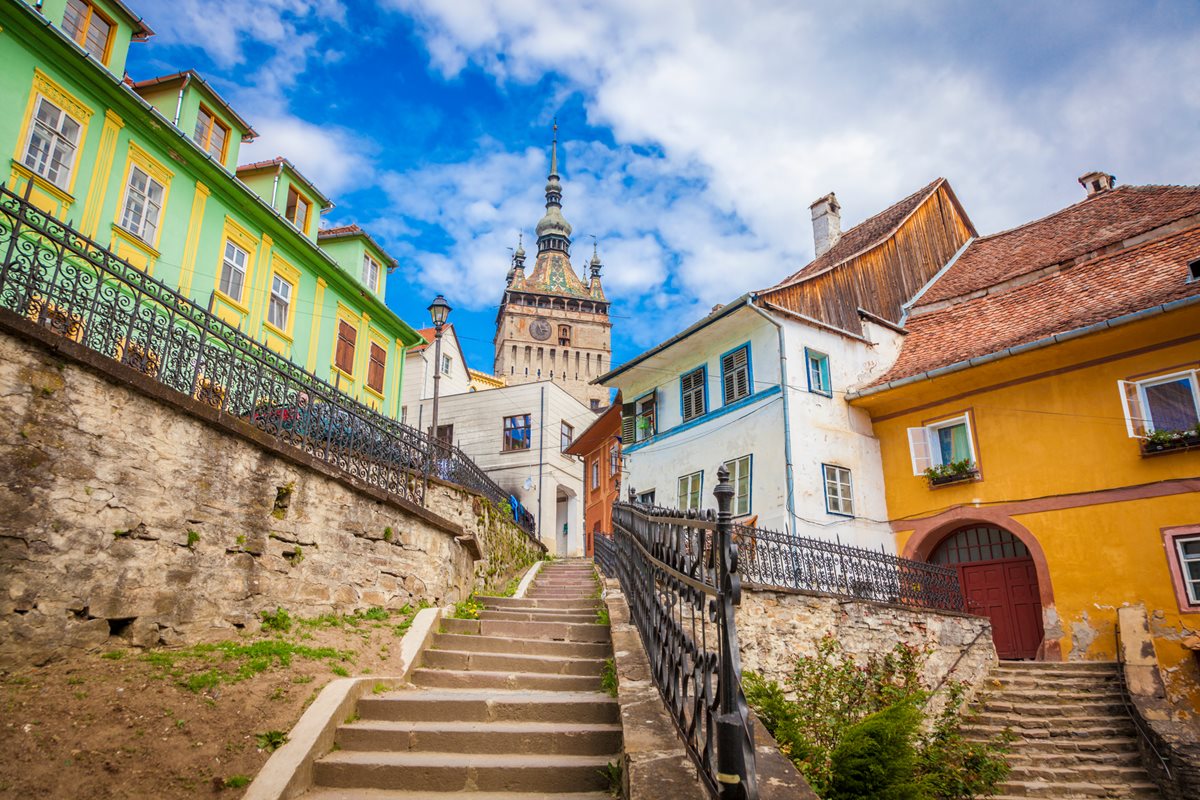Day 3
After breakfast, tourists will go on a city tour of Sibiu where they will visit the Brukenthal Museum - parts of the old fortifications have remained intact and many of the medieval houses inside the walls are historical monuments. The Brukenthal Museum was founded by Samuel Brukenthal, governor of Transylvania (1777-1787), in his own residence in the Austrian Baroque style, housing his collection of paintings, antiques, engravings and books, as well as important collections of ethnography.
The day will end with dinner in the village of Sibiel (near Sibiu) in the peasant houses.
Accommodation at a 4 star hotel in Sibiu.
Day 4
After breakfast, tourists will leave for Medias - Biertan - Sighisoara, where they will visit Sighisoara Fortress.
Also on this day, several fortified churches in Transylvania will be visited.
In Medias, one of the most impressive symbols of the city is the Corvinilor Tower, which is about 70 meters high. Its construction began in the 13th century. In the 15th century it was raised to 5 levels. The Church of St. Margaret was finished around the same time. Later, another 3 floors were added in just 2 months. The roof consists of coloured glazed tiles and 4 turrets were built. The tower had a watchman, who sounded his horn whenever an enemy approached. This is why the tower has this name. The tower has in its south-west corner (between the clocks) a little wooden man ringing a bell, thus announcing in advance when the clock will ring at the fixed time. The strong pressure of the tower on the sandy ground is the reason why the tower is slightly inclined to the north. Between 1927 and 1930, and later in 1972, the tower was reinforced. The inclination of the top to the base is 2.32 m. The town lies in the middle of the area that was inhabited by the Transylvanian Saxons, and there are dozens of fortified churches in an area of 20 km around it.
The fortified church of Biertan was first mentioned in 1402, when most probably a Gothic basilica, was completely demolished. The only remains of the original church are a few stone vault ribs and some grooves. Today's church is a hall-shaped church with a main nave and two aisles. The four-bay church has a 5/8 apse and was built between 1500 and 1525, during the time of the priest Baccalaureus Johannis. The church has brick vaults with ribs in the shape of a mesh across the ceiling. Late Gothic and Renaissance stonework is also preserved, including doors, consoles, pulpit and other architectural elements. The wooden furniture, doors and folding triptych date from the early 16th century. The restoration of "Our Europe" in 1978-1991 revealed parts of the old paintings and inscriptions. On the south side of the upper plateau, the "Catholic Tower" contains frescoes dating from the mid-15th century. The two protective walls, which rest partly on arches, are reinforced by several towers and a bastion. To reach the upper plateau of the fortress, one has to pass through four gate towers. The outer wall, located mostly at the base of the hill, is reinforced to the west and south by two 'zwingers' fortified with gate towers. Since 1993, the entire church complex has been on the UNESCO World Heritage List.
Built in the first part of the 13th century on a hill and protected by numerous towers and walls, Sighisoara is a very picturesque medieval fortress, including the "House of Vlad Dracul", the birthplace of Vlad Tepes, "Dracula", numerous churches and civil buildings. The entire fortress is a UNESCO heritage site.
The afternoon will be spent in the fortress of Sighisoara
Dinner at the Restaurant "Vlad Dracul"
Accommodation at a 3 star hotel in Sighisoara.









